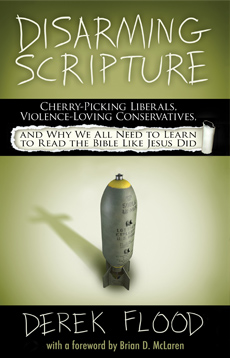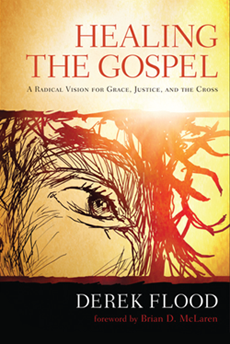God at the Movies: Why Faith is about Story, not Doctrine
Wednesday, July 20, 2011
There is a tendency for religious scholars (both the systematic theologians who pick out propositional truths, and the historical Jesus crowd who try to remove that story by 'de-mythologizing' the text) to pull the sayings of Jesus out of that narrative context. This shows a fundamental misunderstanding of how story functions. So in this post I briefly attempt to illustrate the power of story, and how thinking narratively can deepen our theology.
(reprinted from the Huffington Post)
Stories play a profound role in our lives. They are how we make sense of our experiences and organize our memories. Stories are how we tell people about our day, what we hear on the news and even what we dream at night. That's probably why story is our most prolific art form. Most of us have grown up on a steady diet of stories in the form of movies and television (and hopefully a few books, too).
What is so powerful about story is not the plot-line of the story itself, but the way that we are drawn into that story, how we feel the drama and identify with the protagonist. We therefore experience what the main character is going through. That's powerful because when we do that it has the potential to bring us beyond the typical polarizing divides of right vs. left or believer vs. atheist. By hearing and empathizing with their story, seeing things from their point of view, we can see the other human being across from us. Religious and political debates often get caught up in arguing about issues and doctrines, and we miss how our words can hurt another. Listening to others' stories -- and therefore practicing empathy -- can help us reconnect with the human and personal, even when we disagree.
Stories also allow us to understand an issue much more deeply than we could when it is explained on a merely theoretical level. A good writer can craft a narrative with complex and conflicted characters and overlapping and intertwining plot-lines. The result is a story that captures the messiness and complexity of our lives in a way that propositions and principles simply cannot. Thinking narratively provides a way of understanding who we are, and how life works in a deep, messy and complicated way that can lead us to a deeper and richer understanding of an issue in all of its complexity and nuance.
Ultimately, story is a way to communicate and bring us in contact with meaning. It not only describes the complex reality of our experience, but also identifies the underlying plot which gives that existence purpose. Stories allow us to make sense of our lives, and see the sacredness of the ordinary. They make us laugh and weep and cheer because we connect them with our own struggles, stretching our own humanity and illuminating our life with meaning. As Robert McKee writes, "Our appetite for story is a reflection of the profound human need to grasp the pattern of living, not merely as an intellectual exercise, but within a very personal, emotional experience."
With all that in mind, it is not surprising that story is in fact the form most of the Bible is written in. The Gospels, for instance, are all written as narratives. Since story is such a foundational part of how we as humans make sense of our lives, it makes sense that our sacred texts would make use of story. Yet despite this biblical emphasis, Protestant theology has been mostly concerned with expressing doctrine in the form of propositional truths. That is, it reads the Bible not as story, but as a source from which to mine doctrinal statements. In doing this, we divorce Scripture from its original rich narrative context, and reduce it to simple dogmatic formulas, rather than allowing it to retain the complexities inherently found in story, which of course mirror the complexities of real life.
Labels: art, Bible, film and media, narrative theology





